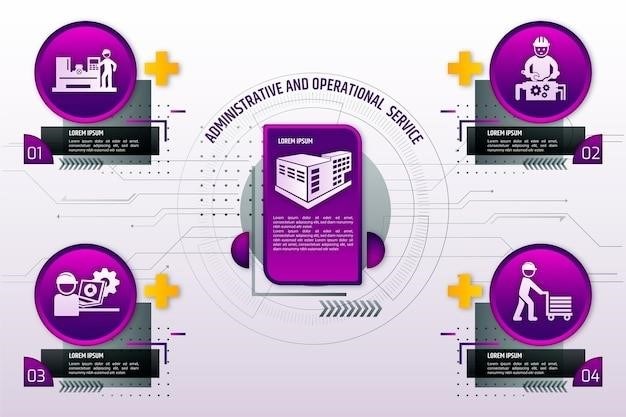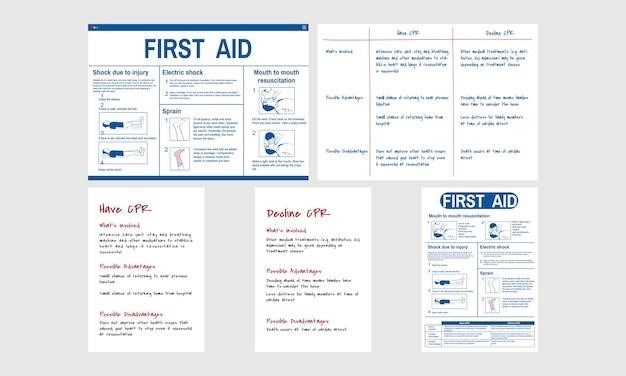This guide provides a comprehensive overview of common FiTech fuel injection issues, troubleshooting steps, and resources to help you diagnose and resolve problems with your FiTech system. Whether you’re experiencing starting difficulties, fuel delivery issues, idle problems, or acceleration concerns, this guide will equip you with the knowledge and tools to get your engine running smoothly.
Introduction
FiTech fuel injection systems have revolutionized the way we approach engine management, offering a seamless blend of performance, efficiency, and user-friendliness. However, even the most advanced technology can encounter occasional hiccups. This FiTech Troubleshooting Guide is your comprehensive resource for navigating common issues and ensuring your engine runs smoothly. It’s designed to empower you with the knowledge and tools to address problems effectively, whether you’re a seasoned mechanic or a DIY enthusiast. Our aim is to provide a clear and concise guide that breaks down troubleshooting steps into manageable chunks, making the process less daunting.
We’ll explore a range of common FiTech issues, from engine starting difficulties to fuel system problems and idle inconsistencies. Each section will be accompanied by detailed explanations, potential causes, and practical troubleshooting steps. We’ll also delve into the world of FiTech support and community resources, ensuring you have access to a network of experts and fellow enthusiasts for assistance. By understanding the fundamentals of FiTech troubleshooting, you’ll gain the confidence to tackle challenges head-on, keep your engine running at peak performance, and maximize your enjoyment on the road.
Common FiTech Issues
While FiTech fuel injection systems are renowned for their reliability and performance, they can occasionally encounter issues. Understanding these common problems and their potential causes is crucial for effective troubleshooting. Here’s a breakdown of some frequently encountered FiTech issues⁚
- Engine Starting Problems⁚ Difficulty starting the engine can be attributed to factors like a lack of fuel pressure, spark issues, or air leaks in the intake manifold. These problems can often be identified by checking fuel pressure, spark plugs, and the integrity of the intake system.
- Fuel System Issues⁚ Fuel delivery problems can manifest as engine hesitation, sputtering, or a lack of power. Common culprits include clogged fuel filters, faulty fuel pumps, or issues with the fuel injectors themselves. A thorough inspection of the fuel system is essential to pinpoint the root cause;
- Idle Problems⁚ An erratic idle can be caused by a variety of factors, including vacuum leaks, incorrect idle air control (IAC) settings, or problems with the throttle position sensor (TPS). Careful inspection and adjustment of these components can often resolve idle issues.
- Acceleration Issues⁚ Sluggish acceleration or bogging down during acceleration can be linked to issues with the fuel delivery system, such as incorrect fuel pressure, clogged fuel filters, or problems with the accelerator pump. Addressing these problems can restore smooth acceleration.
By understanding these common FiTech issues and their potential causes, you’ll be better equipped to approach troubleshooting with a methodical and informed approach. Remember to consult your FiTech manual and utilize available diagnostic tools for a more precise diagnosis.

Engine Starting Problems
If your engine is struggling to start, it’s essential to systematically troubleshoot the potential causes. FiTech systems are designed for reliable starting, but several factors can hinder this process. Here’s a breakdown of common engine starting problems and their potential solutions⁚

- Lack of Fuel Pressure⁚ Insufficient fuel pressure can prevent the engine from firing. Check the fuel pump’s operation and ensure it’s delivering the correct pressure. Inspect the fuel filter for clogging, which can restrict fuel flow. Additionally, check the fuel lines for leaks or kinks that might impede fuel delivery.
- Spark Issues⁚ A faulty spark plug, a weak spark, or a problem with the ignition coil can prevent combustion. Inspect the spark plugs for wear or fouling, and ensure they are properly gapped. Test the ignition coil for proper output to rule out any issues with spark delivery.
- Air Leaks in the Intake Manifold⁚ Air leaks in the intake manifold can disrupt the air-fuel mixture, making it difficult to start the engine. Carefully inspect the intake manifold gaskets, hoses, and connections for any signs of leaks. Use a vacuum gauge to test for leaks if necessary.
- Battery Issues⁚ A weak or discharged battery can prevent the starter motor from cranking the engine effectively. Check the battery voltage and ensure it’s within the recommended range. If the battery is weak, replace it or recharge it fully.
- Starter Motor Problems⁚ A faulty starter motor can prevent the engine from turning over. Check the starter motor’s connections, and ensure it’s receiving power. If the starter motor is malfunctioning, it may need to be repaired or replaced.
Remember, tackling engine starting problems requires a methodical approach. By systematically checking these potential causes and addressing any issues, you’ll be well on your way to getting your engine running smoothly again.
Fuel System Issues
The fuel system is the lifeblood of your engine, and any disruptions can lead to performance problems. FiTech fuel injection systems are known for their efficiency and precision, but occasional issues can arise. Here’s a look at common fuel system problems and how to address them⁚
- Fuel Pressure Problems⁚ Maintaining the correct fuel pressure is crucial for proper fuel delivery. If the fuel pressure is too low, the engine may experience hesitation, stalling, or poor performance. Check the fuel pressure using a gauge and compare it to the manufacturer’s specifications. If the pressure is too low, investigate potential causes such as a faulty fuel pump, clogged fuel filter, or leaks in the fuel lines.
- Fuel Pump Issues⁚ The fuel pump is responsible for delivering fuel from the tank to the engine. A faulty fuel pump can lead to low fuel pressure, engine stalling, or even complete fuel system failure. Check the fuel pump’s operation, listen for any unusual noises, and ensure it’s delivering the correct fuel pressure. If the fuel pump is malfunctioning, it may need to be replaced.
- Fuel Filter Clogging⁚ A clogged fuel filter can restrict fuel flow, leading to reduced fuel pressure, engine hesitation, or even stalling. Replace the fuel filter regularly according to the manufacturer’s recommendations, and inspect it for clogging if you suspect fuel system issues.
- Fuel Injector Problems⁚ Fuel injectors are responsible for precisely metering fuel into the engine’s cylinders. Clogged or faulty injectors can disrupt the fuel-air mixture, leading to rough idling, poor acceleration, or even engine misfire. Inspect the injectors for any signs of clogging or damage, and consider having them cleaned or replaced if necessary.
Addressing fuel system issues requires a systematic approach. By carefully checking the fuel pressure, inspecting the fuel pump, fuel filter, and injectors, you can diagnose and resolve most fuel system problems.
Idle Problems
A smooth, consistent idle is a sign of a well-tuned engine. If your FiTech-equipped engine is exhibiting idle problems, it can be frustrating and point to underlying issues. Here’s a breakdown of common idle problems and their potential causes⁚
- Rough Idle⁚ A rough idle is characterized by engine vibrations, shaking, or an uneven engine speed. Common causes include vacuum leaks, faulty spark plugs, a clogged air filter, a dirty throttle body, or a malfunctioning idle air control (IAC) valve. Inspect these components for signs of wear, dirt, or damage, and address any issues found.
- High Idle⁚ If your engine idles too high, it could be due to a stuck throttle plate, a faulty IAC valve, or a vacuum leak. Check the throttle plate for free movement, inspect the IAC valve for proper operation, and search for any leaks in the vacuum lines. Adjusting the idle speed screw on the throttle body may also be necessary.
- Low Idle⁚ A low idle can be caused by a restricted air intake, a faulty IAC valve, a clogged fuel filter, or a fuel pressure issue. Inspect the air intake for obstructions, check the IAC valve for proper operation, and verify the fuel filter is clean and the fuel pressure is within specifications.
- Stalling at Idle⁚ If your engine stalls at idle, the problem could be related to fuel delivery, ignition timing, or a vacuum leak. Check the fuel pressure, inspect the spark plugs and wires, and search for any leaks in the vacuum lines. Adjusting the idle speed screw may also be helpful.
Diagnosing idle problems requires a systematic approach. By carefully checking the common culprits, you can often identify the root cause and resolve the issue.
Acceleration Issues
A responsive and smooth acceleration is essential for a pleasurable driving experience. If your FiTech-equipped vehicle is experiencing acceleration issues, it’s crucial to identify the root cause to restore optimal performance. Here are some common acceleration problems and their potential causes⁚
- Hesitation or Bogging⁚ Hesitation or bogging during acceleration can be caused by a variety of factors, including a clogged air filter, a faulty fuel pump, a restricted fuel filter, a malfunctioning throttle position sensor (TPS), or a lean fuel condition. Inspect the air filter for dirt or debris, check the fuel pump pressure, verify the fuel filter is clean, ensure the TPS is functioning correctly, and adjust the fuel mixture if necessary.
- Stuttering or Misfiring⁚ Stuttering or misfiring under acceleration can be caused by faulty spark plugs or wires, a weak ignition coil, a clogged fuel injector, or a faulty oxygen sensor. Inspect the spark plugs and wires for wear or damage, test the ignition coil, clean or replace the fuel injectors, and check the oxygen sensor for proper operation.
- Lack of Power⁚ A lack of power during acceleration can be attributed to a number of factors, including a clogged catalytic converter, a faulty mass airflow sensor (MAF), a restricted exhaust system, or a weak fuel pump. Inspect the catalytic converter for blockage, check the MAF for proper operation, ensure the exhaust system is free-flowing, and verify the fuel pump pressure is adequate.
- Excessive Smoke⁚ Excessive smoke during acceleration could be caused by a rich fuel mixture, a faulty fuel injector, a clogged air filter, or a problem with the exhaust system. Inspect the fuel injectors for leaks or blockages, check the air filter for dirt or debris, and ensure the exhaust system is free-flowing.
Troubleshooting acceleration issues often requires a methodical approach. By systematically examining the common causes and addressing any issues found, you can restore your engine’s responsiveness and enjoy a smooth and powerful acceleration.
Troubleshooting Tools and Resources
Equipped with the right tools and resources, diagnosing and resolving FiTech issues becomes a much smoother process. Here’s a list of essential tools and resources that can significantly aid in troubleshooting your FiTech system⁚
- FiTech Handheld Controller⁚ This versatile tool allows you to monitor real-time engine data, adjust fuel and timing settings, and diagnose various system issues. It’s an invaluable tool for troubleshooting and fine-tuning your FiTech system.
- Digital Multimeter⁚ A multimeter is essential for testing electrical components, such as sensors, relays, and wiring. It can help you identify faulty components and ensure proper electrical connections.
- Fuel Pressure Gauge⁚ A fuel pressure gauge is crucial for checking the fuel pump’s output pressure and verifying proper fuel delivery to the injectors. Adequate fuel pressure is essential for optimal engine performance.
- Vacuum Gauge⁚ A vacuum gauge can help assess engine vacuum levels, which can indicate problems with intake leaks, faulty sensors, or restricted airflow. Proper vacuum levels are critical for smooth engine operation.
- FiTech Website and Tech Support⁚ The FiTech website provides comprehensive documentation, troubleshooting guides, and FAQs. You can also access their tech support team for assistance with specific issues or for technical guidance.
- FiTech Forums and Online Communities⁚ Online forums and communities dedicated to FiTech fuel injection offer a platform for sharing experiences, seeking advice, and troubleshooting problems with other FiTech users.
By utilizing these tools and resources, you can equip yourself with the knowledge and capabilities to confidently troubleshoot and resolve various FiTech issues, ensuring your engine runs smoothly and efficiently.
FiTech Support and Community
FiTech Fuel Injection offers a robust support system to assist users in resolving any issues they may encounter. Beyond the comprehensive online resources, FiTech provides a dedicated team of experts ready to lend their knowledge and expertise. Here’s a closer look at the support and community resources available to FiTech users⁚
- FiTech Website Support⁚ The FiTech website features an extensive library of technical documentation, troubleshooting guides, and FAQs designed to answer common questions and provide solutions to various problems. This comprehensive resource is a valuable starting point for resolving issues;
- FiTech Tech Support⁚ For more complex issues or when needing direct assistance, FiTech offers dedicated tech support. Users can contact the tech support team via phone, email, or online chat to receive personalized guidance and troubleshooting assistance. Their expertise can help resolve even the most challenging problems.
- FiTech Forums and Online Communities⁚ The FiTech community extends beyond the official website. Numerous online forums and communities are dedicated to FiTech fuel injection, providing a space for users to connect, share experiences, and seek advice from fellow FiTech enthusiasts. These forums often offer a wealth of knowledge and support from experienced users who have encountered similar issues and found solutions.
By leveraging these support resources, FiTech users can access valuable information, expert assistance, and a supportive community to help them troubleshoot and resolve any issues they may encounter, ensuring a smooth and enjoyable experience with their FiTech system.
























